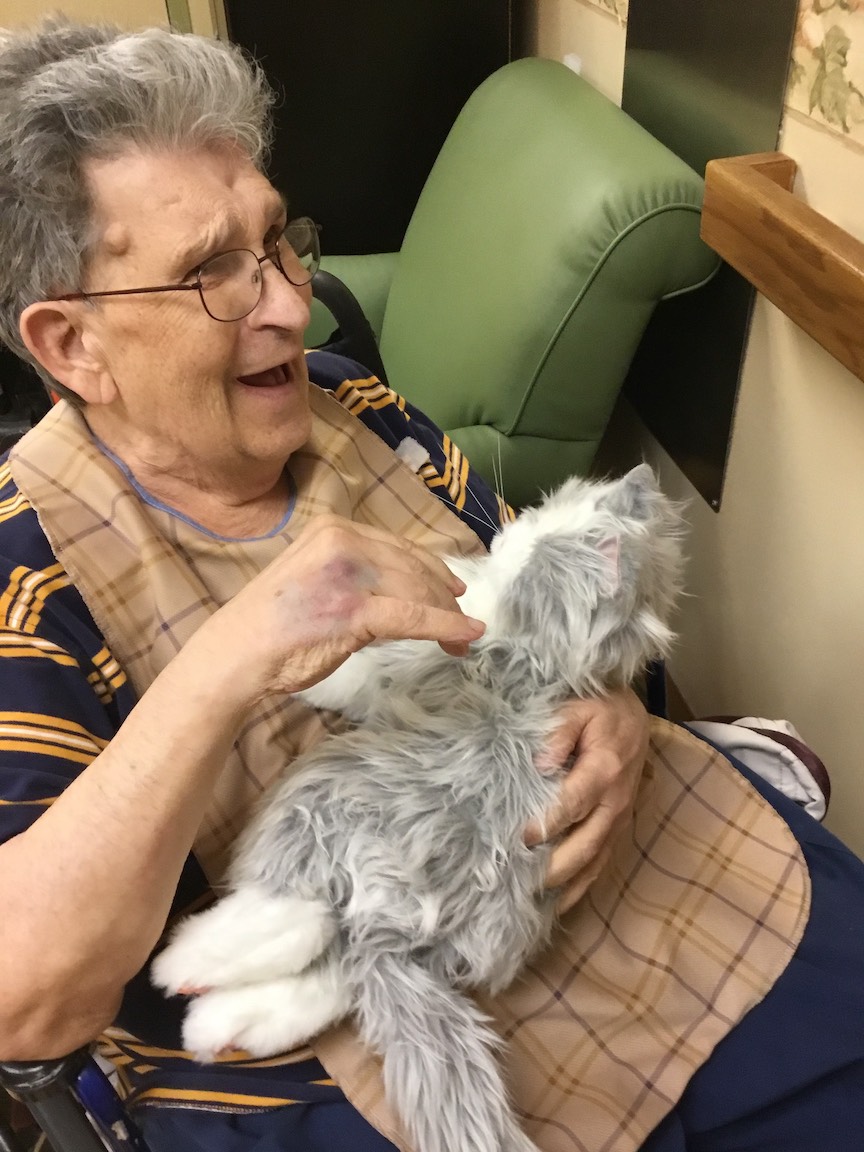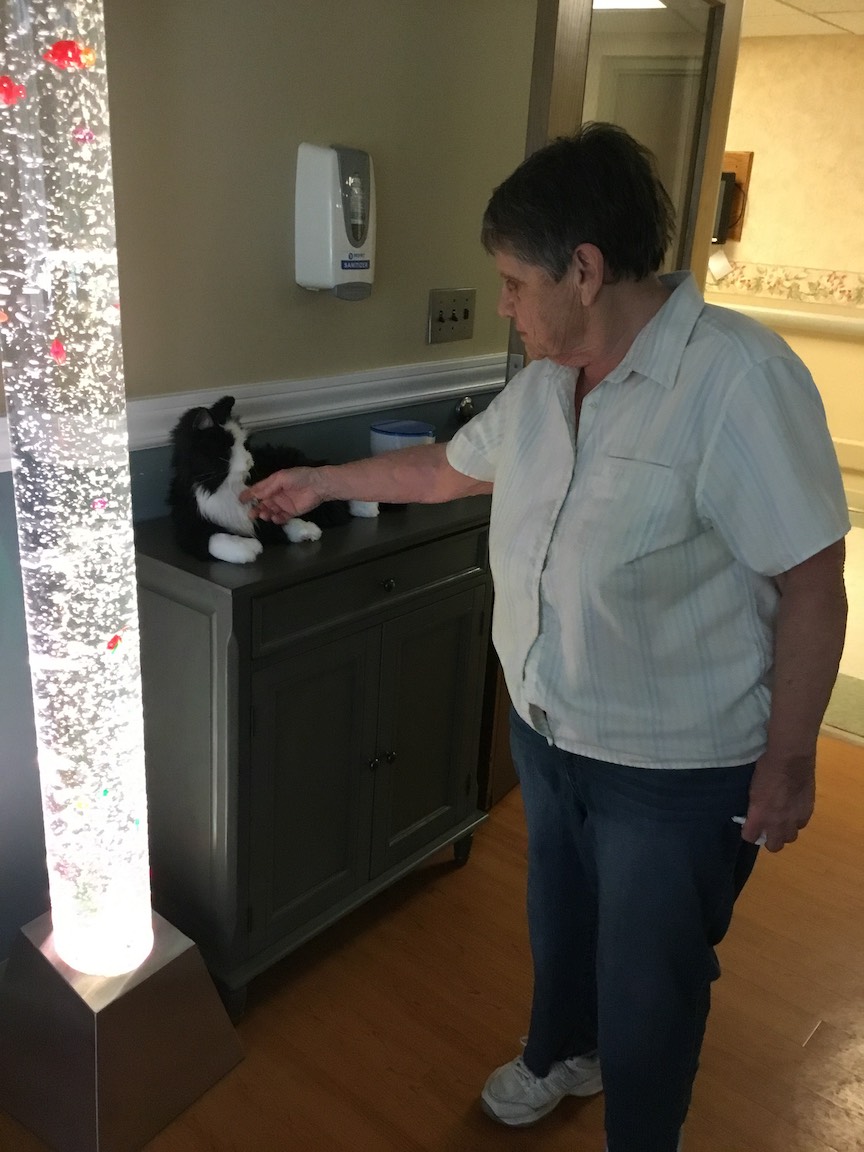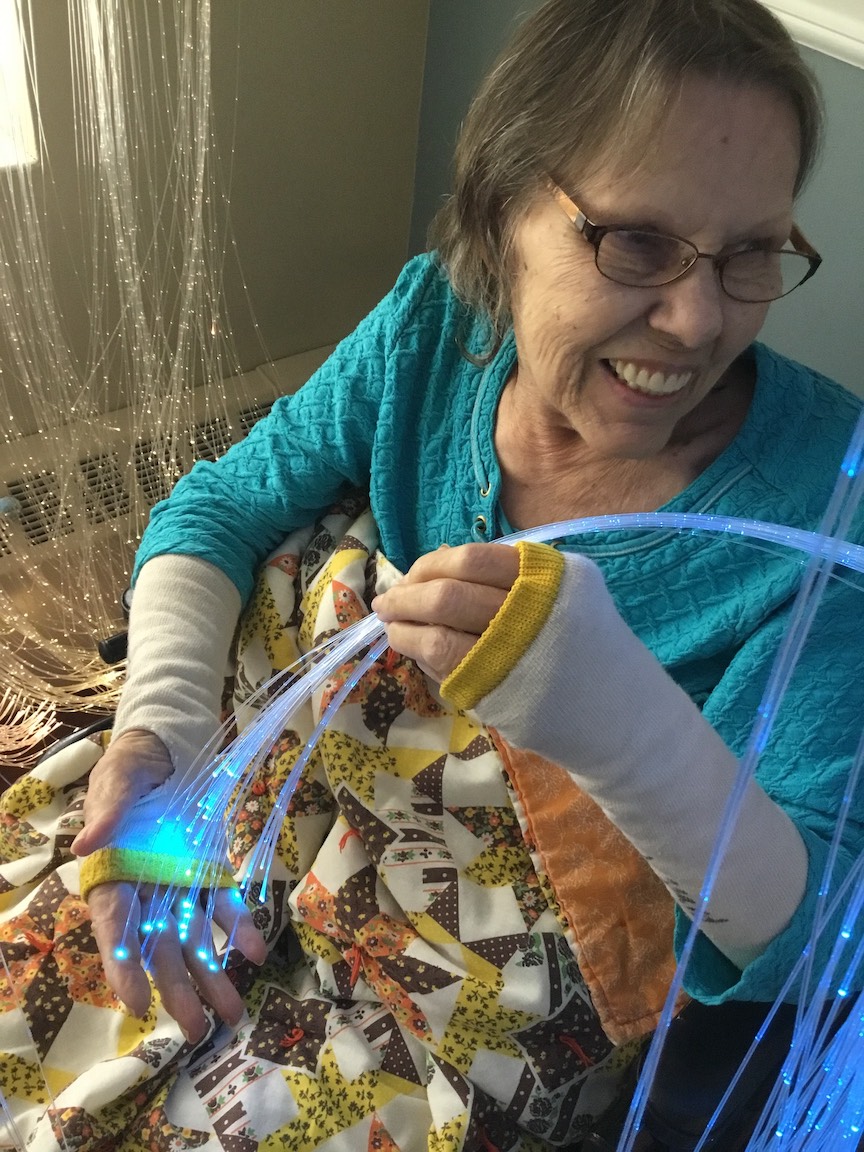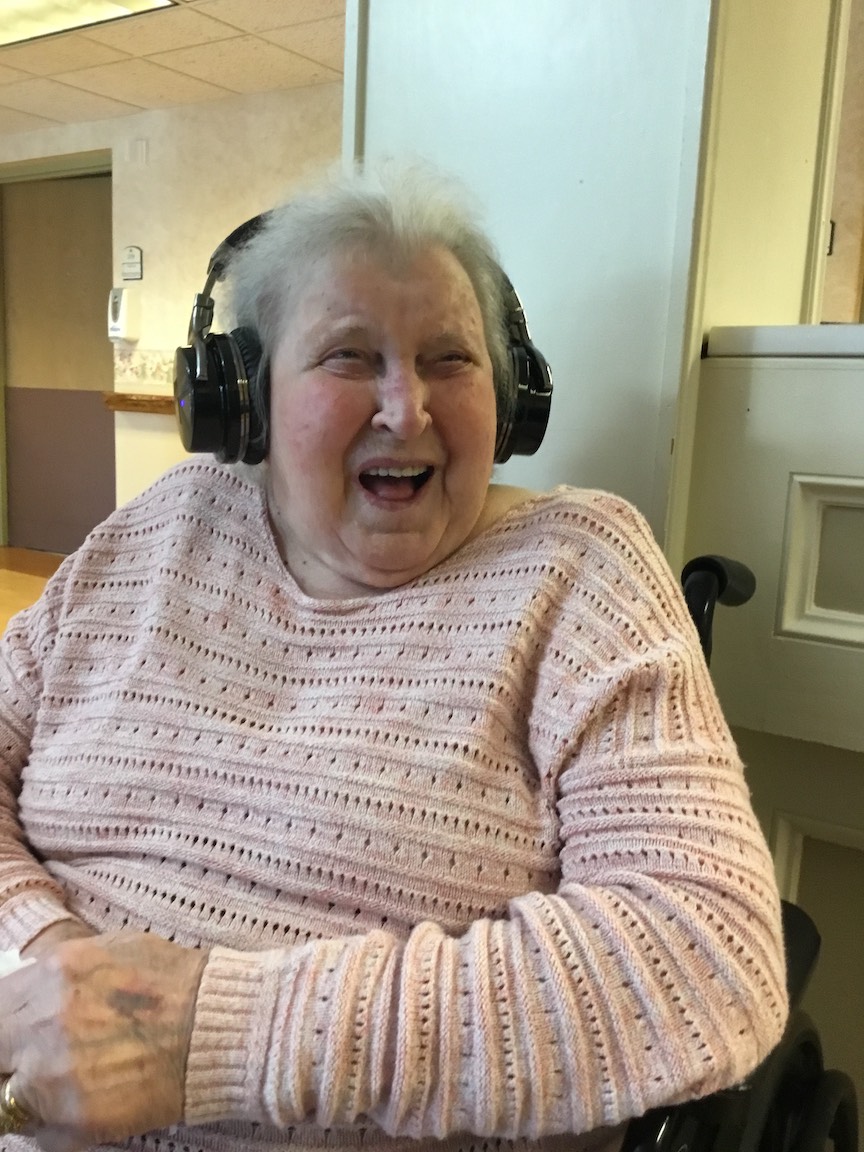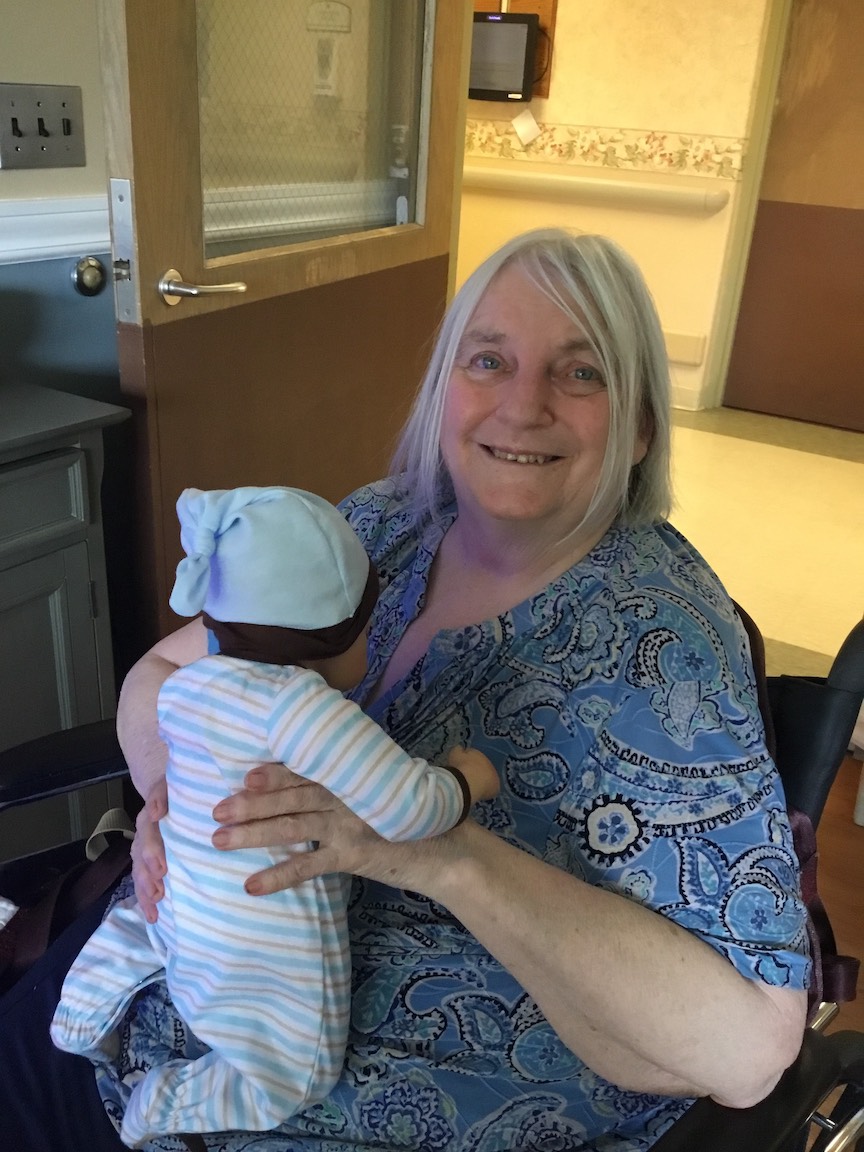New Sensory Room Soothes Memory Care Patients
A new sensory stimulation room in the SKLD Zeeland Gilead Unit has become a game changer for memory care patients, providing a variety of soothing and mesmerizing tools in one space. Patients’ families and even residents living on other floors of the facility are enjoying the room as well, with the stimulating and comforting fixtures, such as fiber optic lamps and curtains and bubble tubes.
Watch a virtual tour of SKLD Zeeland’s sensory stimulation room for patients with dementia and Alzheimer’s disease
Changing Behavior
Studies have found that multisensory stimulation rooms (MSSRs) for people with dementia can have immediate positive effects on the behavior and mood of people with dementia, which is closely correlated to resident falls. For example, in a randomized controlled study, researchers found that immediately after MSS sessions, patients talked more spontaneously, related better to others, did more from their own initiative, were less bored/inactive and were more happy, active or alert.
When the sun sets each day, patients with forms of dementia and Alzheimer’s disease tend to become more agitated, resulting in stress and an increased risk of falling. For residents at SKLD Zeeland, the largest memory care unit in the area of western Michigan, this can become even more chaotic.
“Having so many residents feeling a sense of urgency at the same time can mean they are tempted to hurry past one another and possibly fall,” says Rachael Stapley, life enrichment director.
The sensory room at SKLD Zeeland was a long-time goal of Rebeka Moeggenborg, SKLD Zeeland recreational therapist. “I learned about MSSRs in school, and then I was seeing agitated behavior and wanted a non pharmacological fix,” she says.
Features in the SKLD sensory room reduce anxiety
Blackout shades
Fiber optic lamps and curtains
Bubble tubes
Ceiling light projector
Weighted blankets
Life-like animals and baby dolls
Music players
Fidget tools
Using the room
Moeggenborg says she checks behavior logs from social workers and then tries to pinpoint those residents who could benefit from visiting the sensory room at specific times. She is logging the visits in order to collect data on whether the room is helping to reduce agitation.
Stapley says this makes residents less likely to urgently want to get up and out. “A lot of late-stage dementia brings restlessness, and a lot of residents trying to get themselves out of chairs. We are hoping to reduce that.”
Staff are already seeing anecdotal evidence of benefits. “Falls are often related to anxiety and overstimulation so now we are able to bring patients to a room that’s quiet, dark and comforting, and this blocks out negative, overwhelming stimulation,” says Stapley.
As a day room, residents have the option to visit the sensory room at any time, and some of the mobile tools—like the lifelike cats and babies—are available throughout the facility. Residents from other floors are also checking out the space, and visitors like to stop by in amazement too. “It’s been a great icebreaker for grandkids, especially,” says Moeggenborg.
The sensory room is just one of the ways staff at SKLD Zeeland are working to continuously improve care in the memory care unit. Employees regularly join dementia simulations to gain a sense of what their patients experience, and all staff join a video training by dementia expert Teepa Snow.
Want to know more about SKLD Zeeland’s outstanding memory care unit? Contact us for a tour!

